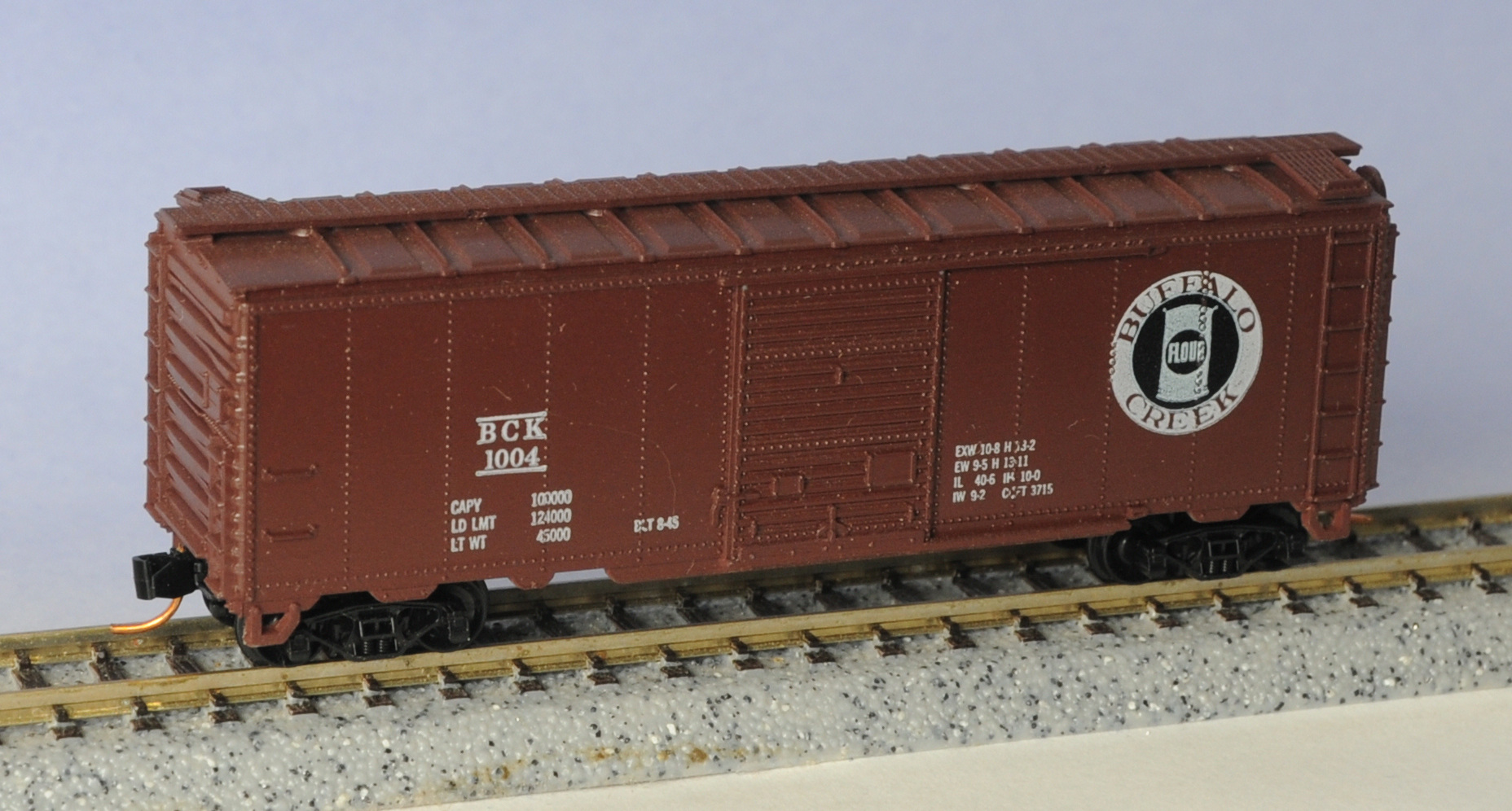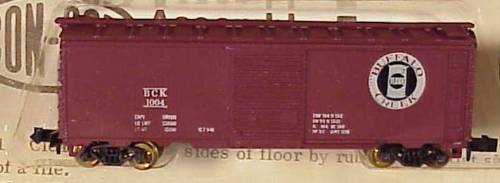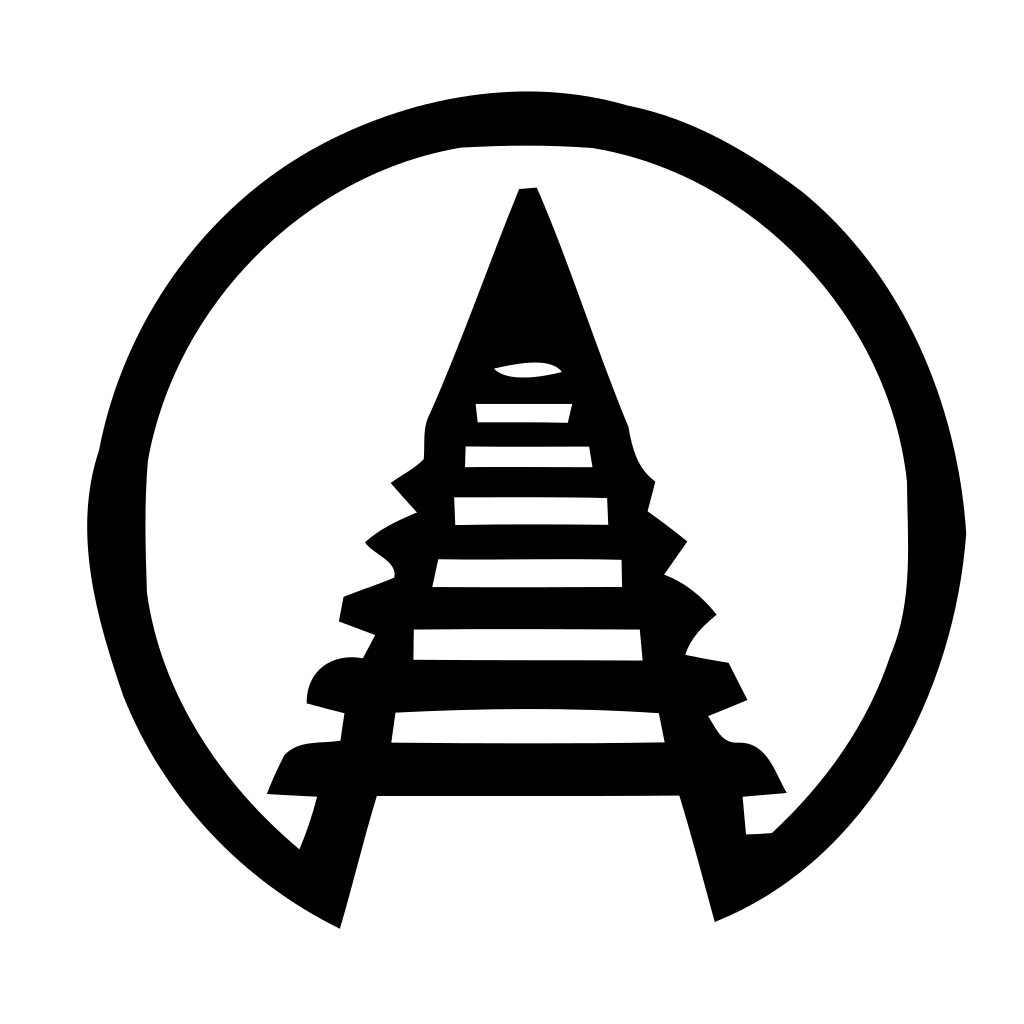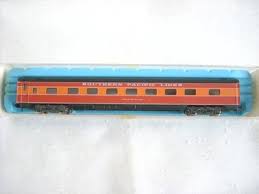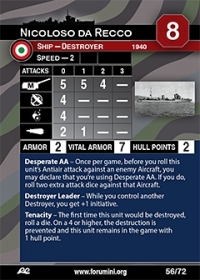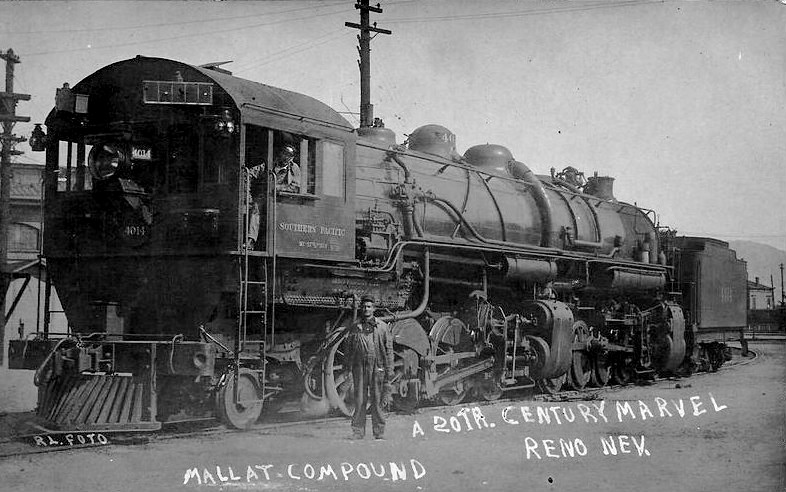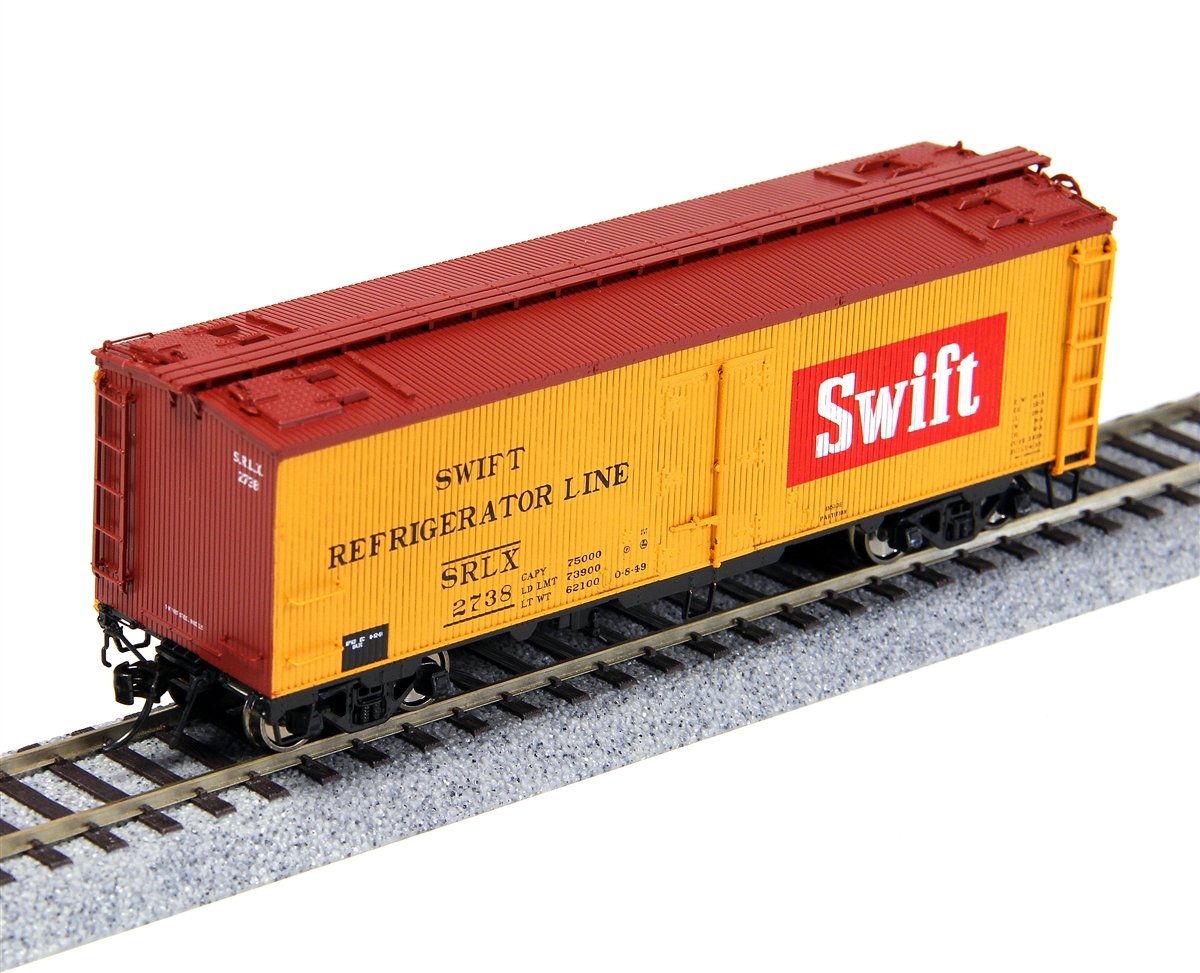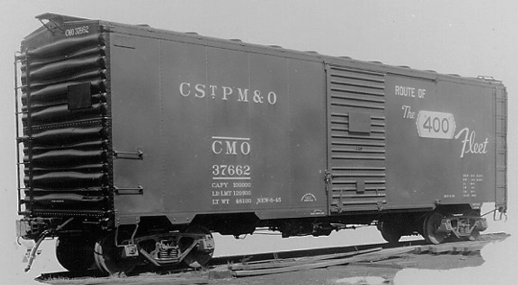Model Information: Originally, these models were produced in Japan by Kato for Con-Cor. However, since Con-Cor owned the tooling, they later decided to move the molds to their Chicago factory and later releases of the car were produced in the United States. This tooling may have been eventually moved to China when Con-Cor moved their production to China in the 1990s. ESM has produced this model in assorted paint schemes.
Prototype History: The Association of American Railroads had been establishing design standards for freight cars since the early part of the century. Each new design standard meant higher capacity, lighter, more durable cars. The 1937 standard 40' box car featured an interior height of 10'. Just prior to America's entry into the war, there was a push for an even larger interior height for the AAR standard. The first cars that would eventually be termed 1944 AAR, were actually built in 1941 but the war delayed its declaration as the standard. The new taller cars required a new design of end. Corrugated metal ends had been used since the days when wood side cars dominated for a very good reason, shifting loads would burst through wooden ends during sudden starts and stops! These corrugated panels were stamped in two sections, split horizontally down the middle. The 1937 standard had 5 ribs on one half and 4 ribs on the other -- creating what is called a 5-4 Dreadnaught end. The slightly taller 1944 model required something a little different. The lower panel has 4 ribs while the upper panel has 3 then a space and a final rectangular rib at the top. Called a 4-3-1 (or R-3-4) Improved Dreadnaught end, this design would dominate new box car construction for years.
Road Name History: 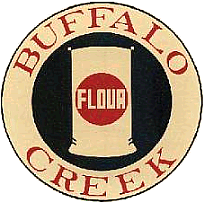 The Buffalo Creek Railroad, commonly referred to as the "little Giant" of the Queen City's rail center, observed its 100th anniversary of service in 1969. The railroad was organized in 1868 and incorporated in 1869. The Buffalo Creek was considered a virtal link in the progress of Buffalo's waterfront. As of 1969, the railroad was measured at 34.23 miles of trackage. Little of it ever stood still during operations that carried on 24 hours a day., seven days a week. The railroad fully dieselized in 1948 when its nine steam engines were retired. In the late 1960s, the staff was at 140 employees and annual payroll in excess of $1mm.
The Buffalo Creek Railroad, commonly referred to as the "little Giant" of the Queen City's rail center, observed its 100th anniversary of service in 1969. The railroad was organized in 1868 and incorporated in 1869. The Buffalo Creek was considered a virtal link in the progress of Buffalo's waterfront. As of 1969, the railroad was measured at 34.23 miles of trackage. Little of it ever stood still during operations that carried on 24 hours a day., seven days a week. The railroad fully dieselized in 1948 when its nine steam engines were retired. In the late 1960s, the staff was at 140 employees and annual payroll in excess of $1mm.
Buffalo Creek was a switching road in the heavy industrialized southern portion of Buffalo NY. It was jointly leased and controlled by Erie (Erie-Lackawanna) and Lehigh Valley, and served as the primary switching carrier in Buffalo's grain elevator and mill district. The railroad was recognized far beyond its Buffalo confines by its fleet of grain box cars with the flour sack in a circle logo. When Conrail was formed on April 1, 1976, Buffalo Creek followed EL and LV into the new railroad, and was formally merged out of existence in 1983.

Buffalo Creek was a switching road in the heavy industrialized southern portion of Buffalo NY. It was jointly leased and controlled by Erie (Erie-Lackawanna) and Lehigh Valley, and served as the primary switching carrier in Buffalo's grain elevator and mill district. The railroad was recognized far beyond its Buffalo confines by its fleet of grain box cars with the flour sack in a circle logo. When Conrail was formed on April 1, 1976, Buffalo Creek followed EL and LV into the new railroad, and was formally merged out of existence in 1983.
Brand/Importer Information: Con-Cor has been in business since 1962. Many things have changed over time as originally they were a complete manufacturing operation in the USA and at one time had upwards of 45 employees. They not only designed the models,but they also built their own molds, did injection molding, painting, printing and packaging on their models.
Currently, most of their manufacturing has been moved overseas and now they import 90% of their products as totally finished goods, or in finished components. They only do some incidental manufacturing today within the USA.
Important Note: The Con-Cor product numbering can be very confusing. Please see here in the article how to properly enter Con-Cor stock numbers in the TroveStar database.
Currently, most of their manufacturing has been moved overseas and now they import 90% of their products as totally finished goods, or in finished components. They only do some incidental manufacturing today within the USA.
Important Note: The Con-Cor product numbering can be very confusing. Please see here in the article how to properly enter Con-Cor stock numbers in the TroveStar database.
Item created by: gdm on 2016-07-09 14:51:47. Last edited by gdm on 2021-03-05 10:48:40
If you see errors or missing data in this entry, please feel free to log in and edit it. Anyone with a Gmail account can log in instantly.
If you see errors or missing data in this entry, please feel free to log in and edit it. Anyone with a Gmail account can log in instantly.


